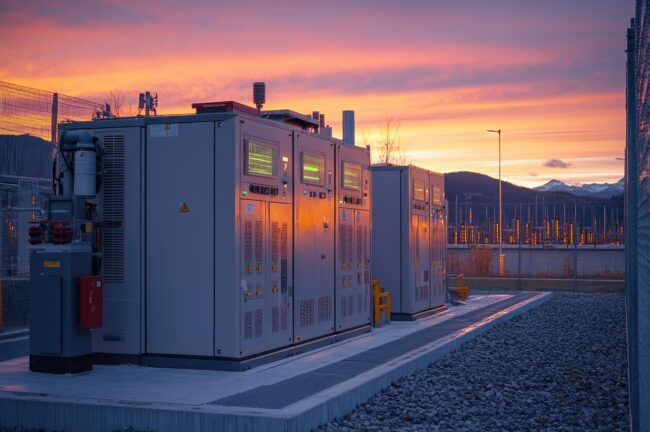To effectively operate a merchant energy storage project, you need to forecast energy prices. While storage projects also rely on earning capacity payments and selling ancillary services, to compete, you need to know when to buy low and sell high in the energy markets. This is commonly known as energy arbitrage, and with greater competition it is an increasingly important share of revenue. We walk through approaches to estimating energy arbitrage revenues at different locations in California, and why both location and predictability matter for finding the best opportunities.
Grid dynamics makes forecasting energy prices difficult
Wholesale energy prices are hard to predict.
First and foremost, prices vary considerably. Unlike in other commodities markets, supply and demand need to be balanced instantaneously. This creates large price swings on a daily and seasonal basis because demand during a hot summer afternoon looks different than the cooler evening later that day, and especially different than a mild day in the fall.
Second, prices vary locationally. In the US, wholesale electricity markets are nodal, meaning every generator and substation has a unique (or multiple unique) pricing point(s). The old real estate adage applies here: location matters. Price points closer to power demand tend to be higher, as meeting that demand requires more grid infrastructure. Besides the cost of building that infrastructure (paid separately from the wholesale prices), the physical elements can be overloaded leading to localized price increases. Think of this like surge pricing for Uber/Lyft.
Both of these features makes energy prices volatile and difficult to predict, however you slice it: within a day (and even individual hours), over the year, and across thousands of locations in a single market

Finding the best opportunities requires valuing energy arbitrage
Given the rapid pace of storage deployments, particularly in CAISO and ERCOT, market participants have turned to energy markets to justify long term investment value. The amount of operating storage capacity is expected to exceed the ancillary service requirements of the ISOs. With that increased competition over “finite” ancillary opportunities, storage developers, investors, and asset owners/IPPs are increasingly focused on the revenue opportunities associated with energy arbitrage.
To aid with this, Tyba provides modeling software that helps companies figure out how to predict and execute on energy arbitrage strategies, in conjunction with capacity, ancillary service, and bilateral commitments. We focus on addressing the core modeling and integration challenges related to energy market operations:
- Price Forecasting – Predicting prices for energy and ancillary services.
- Optimization – Optimizing battery operations to maximize revenue, factoring in prices along with commercial, market, and physical constraints.
- Bidding – Translating an optimal operating plan into a bidding strategy with the ISO and dispatch instructions for the asset.
For the rest of this blog, we focus on the impact of price forecasts on arbitrage revenue. In future posts, we will investigate the impact of optimization and bidding.


Backtesting methodologies
Perfect case illustrates revenue potential
A common starting point to understand the revenue potential for a project is to simulate performance and revenue under a “perfect” foresight case. This represents how the resource would operate if you had advance knowledge of market prices and could bid/clear/operate to capture that. If using historical prices, this is the maximum revenue the resource could have generated if operational. If using forward curves and assuming you believe the price trajectory and volatility of those curves, this is the forward looking maximum revenue potential for the project.
This is a great starting point – but has shortcomings including that having perfect knowledge of prices at all the times is unrealistic (or we’d all be the Princess of Monaco). So what discount should be applied given real world uncertainty?
Incorporating price uncertainty informs what is achievable
There are various modeling approaches companies use to determine what percent of the perfect case (PoP) is realistic for the “non-perfect” case. These methods range in complexity from using yesterday’s actual prices to set today’s plan to leveraging data-driven models, such as AI/ML methods or regressions, to forecast prices. Whether trying to defend asset value to financiers, align on the right price to acquire an asset, or determine if a project will meet your return threshold – it is critical to develop a point of view on what is realistic and to support that point of view in a defensible way.
Without further ado, we will dive into the case study:

Case study: CAISO energy arbitrage variability
For this case study, we selected a node (Node A) in the SCE region of CAISO, with the goal of answering the following questions.
- What revenue can a storage project located at Node A generate from energy arbitrage?
- How is that impacted by price uncertainty?
- How is that impacted as I change market participation strategies?
- How does Node A compare to other nodes in a similar market/geographic region?
Step 1: Establish the assumptions and range of cases
Case study assumptions:

Step 2: Run the analysis
After determining the pricing, optimization, and bidding assumptions, we ran the analysis. Tyba supports this through an easy to use web application as well as model APIs.

Step 3: Review the results
The tables below detail the net revenue (in $/kW-mo) for the DA-only and DART market participation strategies under the perfect and non-perfect cases. In addition to the summary results, Tyba provides detailed granular hourly/sub-hourly outputs.
DA-Only Summary Results
Table 1 – DA Net Revenue vs. Backtest Methodology


DART Summary Results
Table 2 – DART Net Revenue vs. Backtest Methodology


Case Study Findings
- What revenue can a storage project located at Node A generate from energy arbitrage? Node A is able to generate $6.96 per kW-mo for the base DA-only approach under the perfect case.
- How is that impacted by price uncertainty? Node A is able to achieve $6.69 per kW-mo in the non-perfect case, or 96% of the potential revenue.
- How is that impacted as I change market participation strategies? As you move from a DA-only to a DART strategy, the overall revenue opportunity jumps nearly $3 per kW-mo. When factoring in price uncertainty, the non-perfect case increases $0.64 per kW-mo.
- How does Node A compare to other nodes in a similar market/geographic region? Node A is in line with the averages seen across the broader set of nodes. For this group of nodes, we were consistently able to achieve over 90% of perfect for DA-only and over 70% for DART. While the percent of perfect decreases from DA-only to DART, a DART strategy is preferred given the overall higher revenue opportunity (perfect) and expected outcome (non-perfect).
Takeaways
- Results show large revenue variance – the spread between the best and worst performing node is over $1.50 per kW-mo for the DA-only and DART non-perfect cases. This is a significant gap that can make or break a project.
- Potential does not equal predictability – the best location/node based on a perfect case analysis does not always translate to the best node in real life. Bringing in real world, non-perfect analysis earlier into the project development process can help uncover nodes with persistent, predictable energy arbitrage opportunities.
- Co-optimization strategies rely on good price predictions – explore various market participation strategies to ensure you have the right approach. Moving from a DA-only to DART approach made sense for each location evaluated in this case study, but that may not always be the case if you are not able to effectively predict relative prices across the DA and RT markets.
- Defend project value by showing predictability – defend energy value by (i) showing perfect and non-perfect revenue, (ii) supporting with detailed data & assumptions, and (iii) comparing against similar nodes/locations/opportunities.
- Place case study in broader context – to bolster the investment thesis, you could also include:
- More historical years
- Forward curves with a percent of perfect discount applied
- Additional market participation strategies including ones with ancillary services and virtual bidding
Footnotes
- Used the same underlying ML approach for all nodes. In practice, Tyba would evaluate various AI/ML/other forecasting models to maximize performance.
A DART strategy co-optimizes across the day-ahead energy market and real time energy market. This case assumes no virtual bidding. - Future blog posts will go into translating price uncertainty into effective bidding strategies.



